Surviving Sudden Cardiac Arrest-My Story.
By Dr. Ken Anderson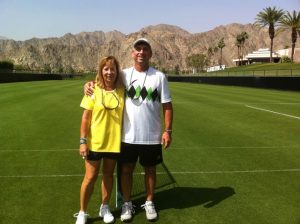
Sudden Cardiac Arrest Awareness is an important medical issue to me. Ten years ago, I suffered a cardiac arrest. It was the hottest day of the year on September 26, 2010. My wife and I were playing tennis with our friends Todd and Sue. We were the only ones at the tennis club. Suddenly I dropped over on the court due to a cardiac arrest. I survived only due to my friends’ efforts to resuscitate me, and the good fortune of having an AED at our tennis club.
Sudden cardiac arrest or sudden cardiac death is a condition when the heart stops beating in a rhythm that is effective in pumping blood throughout the body. This means that the heart usually goes into ventricular fibrillation or ventricular tachycardia. The heart can also stop beating completely, but this is less common. The person in cardiac arrest is not responsive and will die if immediate attention is not given. This requires CPR and the use of a defibrillator (AED) if one is available. There are approximately 325,000 cases of sudden cardiac arrest yearly outside of the hospital setting in the United States.
In adults, this condition usually is due to coronary artery disease. This condition can also occur in children and is usually due to a cardiac anomaly or an electrical problem in the heart. Prevention in adults is aimed at preventing coronary artery disease. This includes stopping smoking, losing weight, controlling diabetes, regular exercise, and reducing cholesterol. In addition to these risk factors, a family history of sudden cardiac death is another risk factor.
I was lucky. Sue remembered that there was an AED in the Clubhouse, and Todd attempted chest compressions while she ran to get it. After Todd and Sue figured out how to place the pads, the device shocked me twice to restore a normal rhythm. The paramedics arrived shortly and transported me to the nearest hospital.
Successful survival in an out of hospital setting is less than 10% when the resuscitation is done by paramedics. Time is the most important factor with the chance of success decreasing by 10% for every minute that goes by. That is why it is important for non-medical people to be trained in CPR and AEDs available to the public. If a bystander initiates CPR before the ambulance personnel arrive, the survival rate increases to over 30%. It is important that all of the public get trained in CPR use and are familiar with AEDs. These machines literally talk you through how to use them and are completely safe to use. In addition, everyone should be familiar with the PulsePoint AED app which tells you where an AED is located near you. This is a very useful and possibly life-saving app to have on your phone.
My experience led me to work with an organization called San Diego Project Heart Beat. They help place AEDs in the community and teach CPR to the public. A lot of Project Heart Beat’s efforts are done through the schools, but they are available to provide programs for any interested group.
How can you avoid sudden cardiac arrest? The best way to prevent this problem from occurring is to prevent heart disease. It is important to address any risk factors that you have. This can be done by visiting any of the San Diego Sports Medicine physicians to discuss the risk factors, and have some simple blood tests for cholesterol and diabetes screening. Please call us. Evaluation and treatment can help you avoid a sudden cardiac arrest.
You can read Dr. Anderson’s entire story here.
PT for Breast Cancer Surgery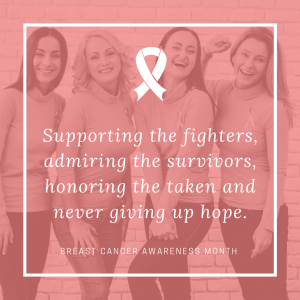
by Doreen Hall, PT
Director of Physical Therapy
It’s a little-known fact that women benefit from Physical Therapy (PT) after breast cancer surgery. Having breast cancer is a life changing event in itself. The mobility issues that ensue after surgery do not always need to be long lasting or life changing!
During a lumpectomy or mastectomy the chest wall and the large pectoral muscles are invaded, leaving scarring and weakness. Although the external scars may heal, many times the scarring contributes to poor muscle function, muscle imbalance and pain. This often leads to frozen shoulder or chronic shoulder and neck pain. Add to this the effects of radiation, chemotherapy and hormone blocking medication and many women suffer more than is necessary. Years later we see women in PT who report that they have accepted these limitations and were never pointed in the direction of a PT who could help!
We need to raise awareness in the community about requesting PT after undergoing treatment for breast cancer. Many of the larger “breast care centers” will routinely send patients to PT. However, many women across the country are not being treated at large research hospitals or comprehensive cancer centers and are falling between the cracks. It has been widely reported that breast cancer now has about a 90% overall survival rate. Many more women are being diagnosed, in part, because of early detection. Often the treatment is completed and the patient is cleared and declared cancer free, without having addressed musculoskeletal issues that may plague a woman for years after. If gentle exercises are started shortly after surgery and properly progressed, the negative effects that are often encountered can be avoided. These movements are very simple. They are as easy as just reaching arms and deep breathing, but it can be scary to start without guidance.
Another thing that sometimes happens after breast surgery is accumulation of fluid or what is called lymphedema. Lymphedema can be minimal and temporary or it can be an ongoing condition which women will struggle with for a lifetime. Lymphedema can be in the arms and in the chest and trunk area and can be triggered by biopsy of just a few axillary lymph nodes. Thankfully, with advanced procedures, the incidence of lymphedema has decreased over the years. However, it is very important to note that the earlier it is treated by a Physical Therapist specifically trained in lymphedema the better the prognosis. Physical therapy intervention, early and often, can mitigate these symptoms and greatly improve quality of life for a breast cancer survivor.
Help spread the word on the importance of physical therapy after breast cancer treatment! At SDSM our physical therapists can help to guide you or your loved one back to enjoying life and physical activity.
Small Health Bites:
After recovery, some symptoms of SARS-CoV-2 infection may persist for many weeks. A study published in Clinical Microbiology and Infection followed non-critical COVID-19 patients for two months following infection and found that up to two thirds of them still had lingering symptoms. Complaints were most commonly loss of taste/smell, labored breathing, or lethargy/lack of energy. Persistent symptoms at two months were significantly associated with age 40 to 60 years old, hospital admission, and abnormal lung exam at symptom onset. Long-term follow-up for COVID-19 patients will be necessary to ensure optimal recovery. It’s important to note that improvement in symptoms, not complete resolution of symptoms, is the recommended criteria for discontinuing home isolation. For people who have a COVID-19 infection, the CDC currently recommends discontinuing home isolation when:
- At least 10 days* have passed since symptom onset and
- At least 24 hours have passed since resolution of fever without the use of fever-reducing medications and
- Other symptoms have improved. This is important criteria.
*A limited number of persons with severe illness may produce replication-competent virus beyond 10 days. That may warrant extending duration of isolation for up to 20 days after symptom onset. A consultation with an infection control expert may be advised.
Carve those pumpkins safely. 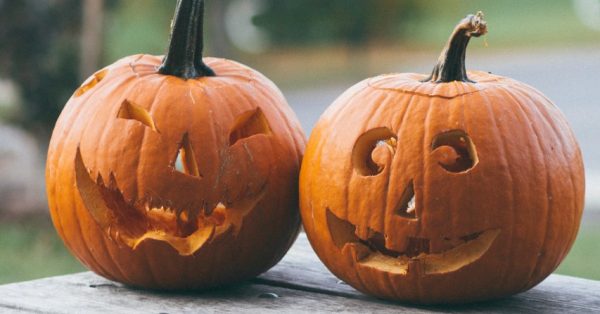 Halloween is just around the corner and pumpkin carving is a wonderful pastime to enjoy with your family. Unfortunately, hand injuries due to pumpkin carving can result in minor to serious cuts, as well as injuries to the tendons, nerves, and bones. The most common injury is a cut finger in the hand that is holding the pumpkin when the knife slips, says Kristen Manecke, SDSM Hand Therapist. Here are some pumpkin carving safety tips to avoid potential injuries:
Halloween is just around the corner and pumpkin carving is a wonderful pastime to enjoy with your family. Unfortunately, hand injuries due to pumpkin carving can result in minor to serious cuts, as well as injuries to the tendons, nerves, and bones. The most common injury is a cut finger in the hand that is holding the pumpkin when the knife slips, says Kristen Manecke, SDSM Hand Therapist. Here are some pumpkin carving safety tips to avoid potential injuries:
- Proper set up: Carve pumpkins in a well-lit, comfortable setting.
- Make sure your hands, tools, and pumpkins are clean and dry while carving. Wash and dry your hands often.
- Use the right tool for the job: It’s safest to use knives or a carving kit specifically designed for carving. Serrated knives work best because they are less likely to get stuck in the pumpkin tissue. You could also use a jab saw (used to cut drywall).
- Adult supervision: An injury can occur in seconds. Always have adult supervision, even with adolescents.
- If you do get cut, clean and apply direct pressure with a clean cloth. If bleeding does not slow down or stop within 15 minutes, you may need to contact your doctor.
Want to avoid the risk altogether? There are lots of ways to decorate pumpkins without carving. Visit your local craft store or Pinterest for inspiration. You could paint them, use push pins, or yarn wrap! Stay safe and avoid spooky injuries!
It’s possible to get both the flu and COVID-19 infections, and it’s difficult to distinguish one from another as they both can have very similar symptoms, says Dr. Jeff Anthony. We don’t have an immunization for COVID at this time, but we do have one for the flu. It’s very important to get the flu immunization to help eliminate influenza, improving your well-being as well as helping doctors to take care of you when/if you get symptoms of fever, fatigue, cough, or GI symptoms. One symptom that is virtually exclusive to COVID is a loss of taste or smell. Continue to practice good COVID protocol; wear masks, wash hands, practice social distancing; and also get your flu shot!
Meet Your Providers: Dr. Alex Bernadett
Hello SDSM Newsletter Readers!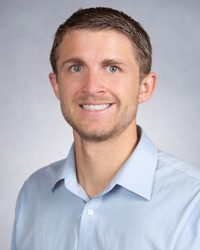
I’m Dr. Alex Bernadett, one of the new physicians at San Diego Sports Medicine & Family Health Center. I grew up in Grass Valley, CA, enjoying the Northern California foothills and close proximity to Lake Tahoe. I earned a Bachelor of Science degree from Tulane University in New Orleans, LA as a biology and economics double major. I went on to graduate from the Tulane University School of Medicine in 2016 and completed my family medicine residency training at the Swedish Family Medicine First Hill program in Seattle, WA in 2019. In August of 2020, I finished my training with a sports medicine fellowship through the UC San Diego/SDSM combined fellow position (so you may recognize me). Upon completion of my fellowship, I decided to continue at SDSM and couldn’t be more excited to practice primary care sports medicine in such a wonderful clinic!
I’m board certified in Family Medicine by the American Board of Family Medicine (ABFM) and have a Certification of Added Qualification (CAQ) in Sports Medicine from ABFM. My special interests include musculoskeletal ultrasound, office-based procedures, sideline and event coverage, and providing care in resource limited settings.
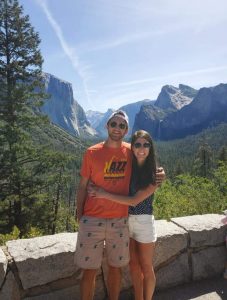
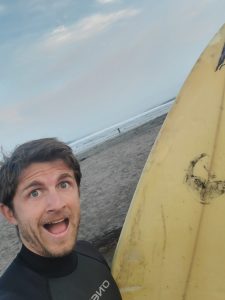
My first experience in San Diego was during the summer of 2009, when I lived with my older sister, now a UCSD grad, in UTC. I spent my time working at the Ralph’s La Jolla deli, learning to surf at La Jolla Shores, and going to Padres games at Petco Park. In my spare time, I enjoy playing and watching sports, keeping up with Major League Baseball (Padres fan since 2019), spending time with my wife, Kristin, and honing my novice surfing skills near our new home in Encinitas.
Best,
Alex Bernadett
Stay safe San Diego.
Fall is upon us and with it continued concern about COVID-19. In addition, we have flu season around the corner. So it’s more important than ever to follow up on important checks on your health. Those with health conditions that put them at higher risk for more severe symptoms should be especially attentive to their healthcare needs. Chronic conditions that may increase risk of worse COVID-19 symptoms includes those with diabetes, asthma, COPD, heart problems, impaired immune function, difficulty getting enough sleep, or are experiencing high levels of stress. It’s important to maintain your health if you have a chronic condition. Ask us about COVID-19 testing and let us help manage your symptoms if you get sick. We are here for you whether you need a well check, advice on testing or care for COVID-19, or have any other health care need. Our Urgent Care office in Pacific Beach is always available to you. Simply call first so we can be sure to see you safely in clinic.
SDSM is dedicated to practicing all CDC recommended infection control measures. Clinics disinfect between each patient interaction with CDC approved disinfectants, employ proper social distancing measures, and follow additional CDC infection control guidelines. When visiting our clinics you can expect fewer people in waiting rooms, to wear a mask or face covering, use hand sanitizer on entry, and be screened for COVID-19 symptoms before entering patient care areas.
Don’t forget telemedicine appointments are an option that can save you time and travel. We are experts in telemedicine and can coach you on self-care at home, provide advice on medications or necessary prescriptions, and can evaluate your need for an in-person visit. We continue to recommend that anyone with cold/flu/COVID-19 symptoms and patients at increased risk of complications from COVID-19 are best addressed through telemedicine appointments.
Please call us if you feel ill, even if you believe you had no exposure to someone who has been sick. Whether you have been practicing stay at home measures, traveling, or out in the community, take care to wear a mask, practice a minimum of six foot social distance from others, wash your hands frequently, and avoid touching your face, mouth, and nose. Working together, we can help you to stay safe, healthy, and thrive.
Yours in health,
The Physicians and Staff of San Diego Sports Medicine and Family Health Center

